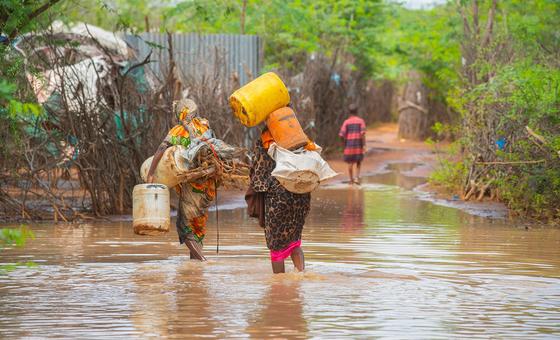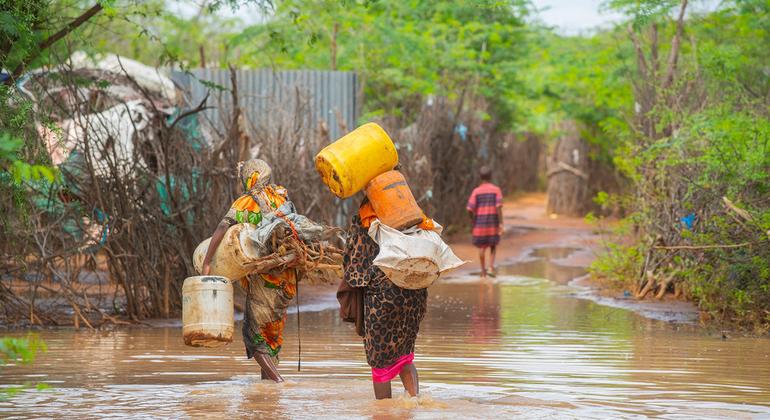
The floods were caused by ongoing heavy rains and come in the wake of the longest and most severe drought on record, the impacts of which are still being felt by millions across the region.
Among the greatest needs are food, emergency shelter, kitchen sets, blankets, clean water and hygiene services. Families living in flood-prone areas also require urgent support to relocate to higher ground.
Damage, destruction and drownings
More than 795,000 displacements have been recorded in Somalia alone, where many of those uprooted had already been forced to flee conflict and drought.
“Homes have been extensively damaged or destroyed and, in some locations, people are sheltering under trees on higher ground. There are also tragic reports of drownings,” said UNHCR Spokesperson William Spindler, speaking in Geneva.
Flash floods in Ethiopia’s Somali Region have affected more than half a million people, and upwards of 20 have died, according to the authorities.
Close to 40,000 families, including those seeking safety from the ongoing conflict in neighbouring Somalia, are also on the run.
A helping hand
Mr. Spindler said 213,000 refugees across five settlements have also suffered. Nearly 1,000 families have lost their shelter, he added, noting that both clean and safe drinking water is scarce. Access to health services has also been impeded.
“In spite of such hardships, many refugees have made generous contributions to support members of the host communities who have also been impacted by the heavy rains,” he said.
Meanwhile, some 25,000 people at the Dadaab refugee camps in northeast Kenya have also been impacted, with many seeking shelter in schools at the complex or in nearby communities. Some refugees are also hosting the newly displaced in their homes, leading to overcrowding.
“Flooded roads have hindered the movement of people, making it particularly difficult for vulnerable people to access services, including for pregnant women to reach hospitals,” said Mr. Spindler.
Another 100 families at the Kakuma camp in northwest Kenya also were forced to move due to massive soil erosion from the rains.
Livestock and incomes lost
Mr. Spindler noted that livelihoods also have been “gravely affected” by the flooding. He gave the example of one location in southern Ethiopia, where over 65 per cent of the land is now reportedly under water.
“Meanwhile, over 1,000 livestock have died, and another 1,000 hectares of crops have been wiped out in the Somali Region, risking the worsening of an already dire food situation,” he added.
He also voiced grave concern over sanitation. Hundreds of communal latrines have been damaged, putting people at risk of infectious diseases, including cholera. Many roads have been ruined, thus impacting access to healthcare and other critical services.
UN supporting families
UNHCR and partners are distributing relief items to the newly displaced families, including dignity kits for women and girls. Households are also receiving cash assistance to buy building materials to repair or reinforce shelters, and sandbags have been provided to protect people from flood waters.
However, the UN agency stressed the need for urgent donor support to both deliver assistance and protection and to save lives as the rains continue.



